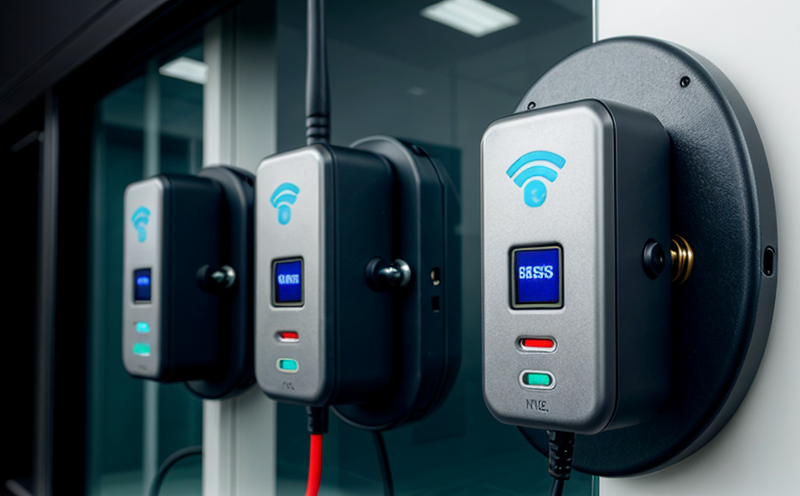IEC 61000 EMC Testing for Wireless Communication Systems
The International Electrotechnical Commission (IEC) IEC 61000 series of standards provides a framework for ensuring electromagnetic compatibility (EMC) in electronic and electrical systems. Within this context, IEC 61000 EMC Testing for Wireless Communication Systems is critical to ensure that wireless communication devices and networks meet the necessary quality and reliability benchmarks required by industry regulations.
The focus of IEC 61000 testing lies in assessing how well a device can function within its electromagnetic environment. This includes ensuring that it does not introduce excessive electromagnetic interference (EMI) into other systems, nor is it susceptible to external EMI. The standards are particularly important for wireless communication systems as they operate in an increasingly crowded and complex spectrum.
The testing process typically involves several stages: pre-compliance tests, screening tests, and final conformity assessment tests. Pre-compliance tests are used to identify potential issues early on, while screening tests help determine if a device is likely compliant with the standards. Final conformity assessments involve detailed measurements of emissions and immunity levels.
Compliance with these standards ensures that wireless communication systems can be reliably deployed across various environments without causing interference or malfunctioning due to external electromagnetic disturbances. This is crucial for industries ranging from telecommunications to automotive, where reliable communication infrastructure is essential.
The testing process involves the use of sophisticated equipment designed to simulate real-world conditions and measure the performance of devices under these conditions. The apparatus used includes anechoic chambers, Faraday cages, and specialized test fixtures that can replicate different electromagnetic environments.
| Applied Standards |
|---|
| IEC 61000-4-2: Electrostatic Discharge (ESD) immunity tests |
| IEC 61000-4-3: Radiated disturbance immunity tests |
| IEC 61000-4-4: Conducted disturbance immunity tests |
| IEC 61000-4-6: Lightning surge immunity tests |
The acceptance criteria for IEC 61000 EMC testing are stringent. Devices must demonstrate that they can operate correctly under specified electromagnetic conditions without causing interference to other devices. This includes both the ability to withstand EMI and to not introduce it into the environment.
In summary, IEC 61000 EMC Testing for Wireless Communication Systems is a vital process that ensures the reliability and performance of wireless communication systems in complex environments. By adhering to these standards, manufacturers can ensure their products meet regulatory requirements and operate effectively without causing or being affected by electromagnetic interference.
Quality and Reliability Assurance
- Compliance Verification: Ensure that all testing aligns with the specified IEC 61000 standards to guarantee product reliability.
- Environmental Simulation: Conduct tests in controlled environments replicating real-world conditions to assess performance accurately.
- Data Analysis: Perform comprehensive analysis of test data to identify any potential issues or areas for improvement.
Quality and reliability assurance play a crucial role in IEC 61000 EMC testing. By following these steps, we ensure that wireless communication systems meet the necessary standards and perform reliably under various conditions.
The process begins with thorough preparation of the test specimen. This involves ensuring the device is in optimal condition for testing, including calibration of all equipment used during the tests. The next step is to conduct a series of pre-compliance tests to identify any potential issues early on. If these tests reveal problems, corrective actions can be taken before proceeding further.
Screening tests follow, which help determine if a device is likely compliant with the standards based on preliminary results. These tests are designed to catch major issues quickly and efficiently, allowing for more targeted final conformity assessments. The final step involves detailed measurements of emissions and immunity levels using specialized equipment and methods outlined in the IEC 61000 series.
The rigorous testing process ensures that wireless communication systems meet all necessary quality and reliability benchmarks required by industry regulations. This not only enhances product performance but also builds consumer trust, which is essential for successful market entry and long-term success.
International Acceptance and Recognition
- Global Standard: IEC 61000 EMC Testing is recognized worldwide as a global standard for ensuring electromagnetic compatibility in electronic devices.
- Regulatory Compliance: Compliance with these standards ensures that wireless communication systems meet the necessary regulatory requirements across different countries and regions.
The acceptance of IEC 61000 EMC Testing is widespread, recognized by numerous national and international regulatory bodies. This global standardization simplifies compliance for manufacturers operating in multiple jurisdictions. By adhering to these standards, companies can ensure their products are accepted worldwide without the need for additional testing or modifications.
The recognition of IEC 61000 EMC Testing is further enhanced by its alignment with other international standards such as ISO and IEEE. This harmonization ensures that manufacturers have a consistent framework across different regions, reducing complexity in product development and certification processes.
For quality managers, compliance officers, R&D engineers, and procurement teams, the global acceptance of these testing standards is particularly beneficial. It provides a clear path for ensuring product reliability and performance, thereby reducing risks associated with non-compliance or product failures.





